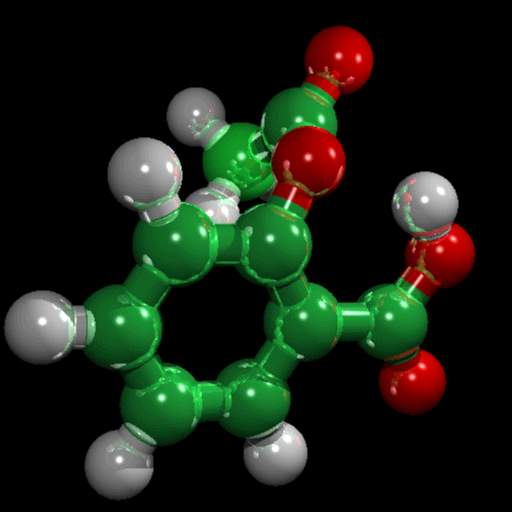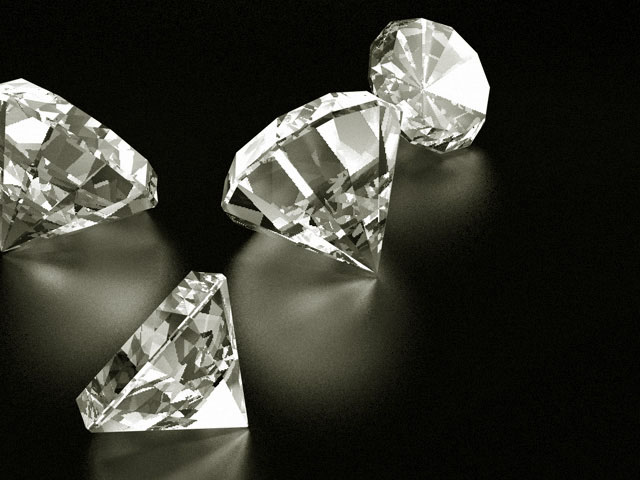Philosophy
 After having explored the early history of chemistry, from its birth in the mysticism of alchemy to its more scientific and systematic formulation, as well as the subsequent theoretical understanding of the relationship of the chemical elements, Professor Jim Al-Khalili traces the history of the inquiry into the various ways in which different elements interact with one another.
After having explored the early history of chemistry, from its birth in the mysticism of alchemy to its more scientific and systematic formulation, as well as the subsequent theoretical understanding of the relationship of the chemical elements, Professor Jim Al-Khalili traces the history of the inquiry into the various ways in which different elements interact with one another.
 In philosophy, the study of the relationship between parts and wholes is known as mereology, and chemical interactions present fascinating ways of testing some such theories. In chemistry, it turns out, wholes are much more than the mere sum of their parts. Take a bunch of carbon, for instance, and depending on how its molecules are configured, you could end up having two fundamentally different substances, even though they are made of exactly the same single ingredient.
In philosophy, the study of the relationship between parts and wholes is known as mereology, and chemical interactions present fascinating ways of testing some such theories. In chemistry, it turns out, wholes are much more than the mere sum of their parts. Take a bunch of carbon, for instance, and depending on how its molecules are configured, you could end up having two fundamentally different substances, even though they are made of exactly the same single ingredient.
 You could end up with a diamond, which is clear and hard as hell, but is a crappy electrical conductor... or you could end up with graphite, which is opaque and weak as shit, but has great conductivity. Of course, if you subject a diamond to sufficient heat, as Antoine Lavoissier did in 1772, you would be able to scientifically prove that (despite the mind-numbing marketing campaign with which so many women have been brainwashed in America) diamonds are NOT forever :)
You could end up with a diamond, which is clear and hard as hell, but is a crappy electrical conductor... or you could end up with graphite, which is opaque and weak as shit, but has great conductivity. Of course, if you subject a diamond to sufficient heat, as Antoine Lavoissier did in 1772, you would be able to scientifically prove that (despite the mind-numbing marketing campaign with which so many women have been brainwashed in America) diamonds are NOT forever :)
 But I digress... As Professor Al-Khalili explains, even though the world around us is made up of roughly 92 elements, it's the various ways in which they can combine and interact with each other that explains the various objects and substances we see everywhere.
But I digress... As Professor Al-Khalili explains, even though the world around us is made up of roughly 92 elements, it's the various ways in which they can combine and interact with each other that explains the various objects and substances we see everywhere.
Configuration is key, and it opens up an astonishing chapter in the history of chemistry, a window into the realization of an ancient alchemical dream: the ability to turn one basic element into another. The discovery of nuclear fusion would also help us understand how the sun fuels itself, and in its most dramatic and practical application, it would give rise to the atomic age.
Learn more about the incredible work of Lisa Meitner here and here.
.
- Cosmos - The Lives Of Stars
If you want to make an apple pie from scratch, Carl Sagan famously argued, you must first invent the universe, and for that, you're going to need stuff. But where does the matter that make up the cosmos come from? How is it created? If all matter...
- Chemistry: A Volatile History - Discovering The Elements
When the ancient Greeks inquired into the building blocks of the universe, they posited the existence of four fundamental elements out of which everything else is composed: earth, fire, air and water (and in some cases, ether). Crude as this taxonomy...
- Proposed Names For The Two New Elements
"Names Proposed for 2 New Elements on Periodic Table" by Kenneth Chang December 1st, 2011 The New York Times Add two names to the periodic table of elements, although you may want to write them in pencil for now. The International Union of Pure and...
- Periodic Table...#112 Is Official
Gesellschaft fur Schwerionenforschung (GSI) in Darmstadt, Germany is the hot bed for discovering and confirming new elements. On November 9th, 1994 the first atom with atomic number 110 was discovered...later confirmed and named in 2003 as Darmstatdium;...
- Phlogiston
In 1777, Lavoisier conducted an experiment that established a fatal shortcoming of the phlogiston theory. He heated mercury and air using a bell-jar for 12 days. Red mercury calx (now HgO) formed and the volume of air decreased from 50 to 42 in3. The...
Philosophy
Chemistry: A Volatile History - The Power of the Elements
 After having explored the early history of chemistry, from its birth in the mysticism of alchemy to its more scientific and systematic formulation, as well as the subsequent theoretical understanding of the relationship of the chemical elements, Professor Jim Al-Khalili traces the history of the inquiry into the various ways in which different elements interact with one another.
After having explored the early history of chemistry, from its birth in the mysticism of alchemy to its more scientific and systematic formulation, as well as the subsequent theoretical understanding of the relationship of the chemical elements, Professor Jim Al-Khalili traces the history of the inquiry into the various ways in which different elements interact with one another. In philosophy, the study of the relationship between parts and wholes is known as mereology, and chemical interactions present fascinating ways of testing some such theories. In chemistry, it turns out, wholes are much more than the mere sum of their parts. Take a bunch of carbon, for instance, and depending on how its molecules are configured, you could end up having two fundamentally different substances, even though they are made of exactly the same single ingredient.
In philosophy, the study of the relationship between parts and wholes is known as mereology, and chemical interactions present fascinating ways of testing some such theories. In chemistry, it turns out, wholes are much more than the mere sum of their parts. Take a bunch of carbon, for instance, and depending on how its molecules are configured, you could end up having two fundamentally different substances, even though they are made of exactly the same single ingredient. You could end up with a diamond, which is clear and hard as hell, but is a crappy electrical conductor... or you could end up with graphite, which is opaque and weak as shit, but has great conductivity. Of course, if you subject a diamond to sufficient heat, as Antoine Lavoissier did in 1772, you would be able to scientifically prove that (despite the mind-numbing marketing campaign with which so many women have been brainwashed in America) diamonds are NOT forever :)
You could end up with a diamond, which is clear and hard as hell, but is a crappy electrical conductor... or you could end up with graphite, which is opaque and weak as shit, but has great conductivity. Of course, if you subject a diamond to sufficient heat, as Antoine Lavoissier did in 1772, you would be able to scientifically prove that (despite the mind-numbing marketing campaign with which so many women have been brainwashed in America) diamonds are NOT forever :) But I digress... As Professor Al-Khalili explains, even though the world around us is made up of roughly 92 elements, it's the various ways in which they can combine and interact with each other that explains the various objects and substances we see everywhere.
But I digress... As Professor Al-Khalili explains, even though the world around us is made up of roughly 92 elements, it's the various ways in which they can combine and interact with each other that explains the various objects and substances we see everywhere.Configuration is key, and it opens up an astonishing chapter in the history of chemistry, a window into the realization of an ancient alchemical dream: the ability to turn one basic element into another. The discovery of nuclear fusion would also help us understand how the sun fuels itself, and in its most dramatic and practical application, it would give rise to the atomic age.
Learn more about the incredible work of Lisa Meitner here and here.
.
- Cosmos - The Lives Of Stars
If you want to make an apple pie from scratch, Carl Sagan famously argued, you must first invent the universe, and for that, you're going to need stuff. But where does the matter that make up the cosmos come from? How is it created? If all matter...
- Chemistry: A Volatile History - Discovering The Elements
When the ancient Greeks inquired into the building blocks of the universe, they posited the existence of four fundamental elements out of which everything else is composed: earth, fire, air and water (and in some cases, ether). Crude as this taxonomy...
- Proposed Names For The Two New Elements
"Names Proposed for 2 New Elements on Periodic Table" by Kenneth Chang December 1st, 2011 The New York Times Add two names to the periodic table of elements, although you may want to write them in pencil for now. The International Union of Pure and...
- Periodic Table...#112 Is Official
Gesellschaft fur Schwerionenforschung (GSI) in Darmstadt, Germany is the hot bed for discovering and confirming new elements. On November 9th, 1994 the first atom with atomic number 110 was discovered...later confirmed and named in 2003 as Darmstatdium;...
- Phlogiston
In 1777, Lavoisier conducted an experiment that established a fatal shortcoming of the phlogiston theory. He heated mercury and air using a bell-jar for 12 days. Red mercury calx (now HgO) formed and the volume of air decreased from 50 to 42 in3. The...
